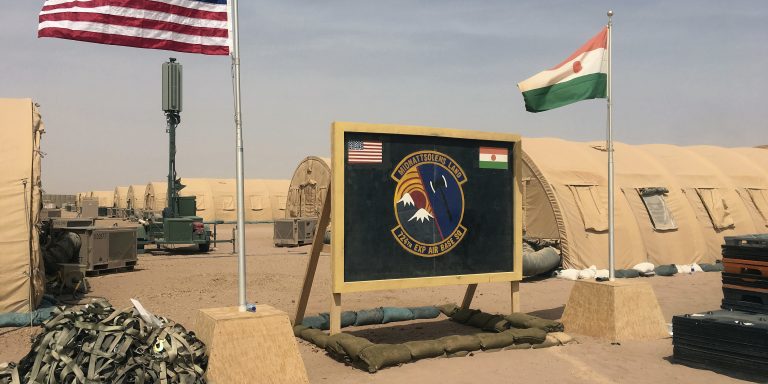INTELBRIEF
May 18, 2018
IntelBrief: ISIS in the Greater Sahara

- On May 16, the U.S. State Department formally designated ISIS in the Greater Sahara (ISIS-GS) as a Foreign Terrorist Organization.
- The group has claimed responsibility for an October 2017 ambush in Niger that killed four U.S. service members and five Nigerien soldiers.
- The State Department also designated the group’s leader, Adnan Abu Walid al-Sahrawi, as a Specially Designated Global Terrorist (SDGT).
- The Sahel/Sahara zone has long been a sanctuary for terrorist groups, including for al-Qaeda affiliates and splinter groups, and now the Islamic State.
.
As it continues to collapse as a territorial proto-state in Syria and Iraq, the so-called Islamic State is maintaining a persistent presence in places that have proven impossible for foreign and local governments to control. In Afghanistan, with essentially limitless resources and time, the United States and other partner countries—as well as the Afghan government—have been unable to stop the establishment and rise of an Islamic State presence. In the Sahel, the situation is even worse, with similarly persistent terrorist and insurgent threats, but far fewer resources and limited government capabilities to counter the threat. Porous borders and weak and corrupt governments work in favor of terrorist groups in the Sahel.
On May 16, the U.S. State Department formally designated ISIS in the Greater Sahara (ISIS-GS) as a Foreign Terrorist Organization (FTO). ISIS-GS was formed in May 2015 when its leader, Adnan Abu Walid al-Sahrawi, proclaimed his group’s allegiance to the Islamic State; in October 2016, the Islamic State accepted that pledge. As is the case in the chaotic world of Sahel terrorist affiliations, al-Sahrawi’s group split off from Al-Mourabitoun, which itself had split off from al-Qaeda in the Islamic Maghreb (AQIM).
In October 2017, ISIS-GS claimed credit for the ambush of a joint Nigerien/U.S. patrol that killed five Nigerien soldiers and four U.S. Green Berets. The Pentagon announced the results of an investigation into the ambush on May 10 and found that the patrol might have faced up to 100 ISIS-GS fighters. The ability to bring that much firepower to a single ambush shows that ISIS-GS is not a group in name only. The prospects for the West and local governments to deal a crippling blow to ISIS-GS, or any of the terrorist groups in the Sahel region—including Ansar Dine, Macina Liberation Front, as well as AQIM and Al-Mourabitoun—are slim.
The history of AQIM shows how difficult it is to truly extinguish a terrorist group that feeds off of both local grievances and the international appeal of the ideology of bin Ladenism. The group’s roots go back to the 1990s in Algeria and the Armed Islamic Group (GIA). A splinter of GIA, Salafist Group for Preaching and Combat (GSPC), gained popularity as a less violent version of GIA but lost members when the government offered them amnesty. Members of GSPC split off and pledged allegiance to Usama bin Laden, becoming AQIM in September 2006. Al-Mourabitoun further split off in 2013, founded by Mokhtar Belmokhtar (AKA ‘the Marlboro Man’) and Adnan Abu Waleed al-Sahrawi. In 2015, al-Sahrawi split off again to form ISIS-GS.
These groups represent a persistent threat to the region. ISIS-GS has been active for several years; the Nigerien ambush was its most high-profile attack to date. The designation as an FTO by the U.S. State Department is a sign that the U.S. takes the threat seriously.
.
For tailored research and analysis, please contact: info@thesoufancenter.org
[video width="960" height="540" mp4="https://thesoufancenter.org/wp-content/uploads/2018/05/Final-Edit-1-197.mp4" poster="https://thesoufancenter.org/wp-content/uploads/2018/05/AP_18113333388430.jpg"][/video]